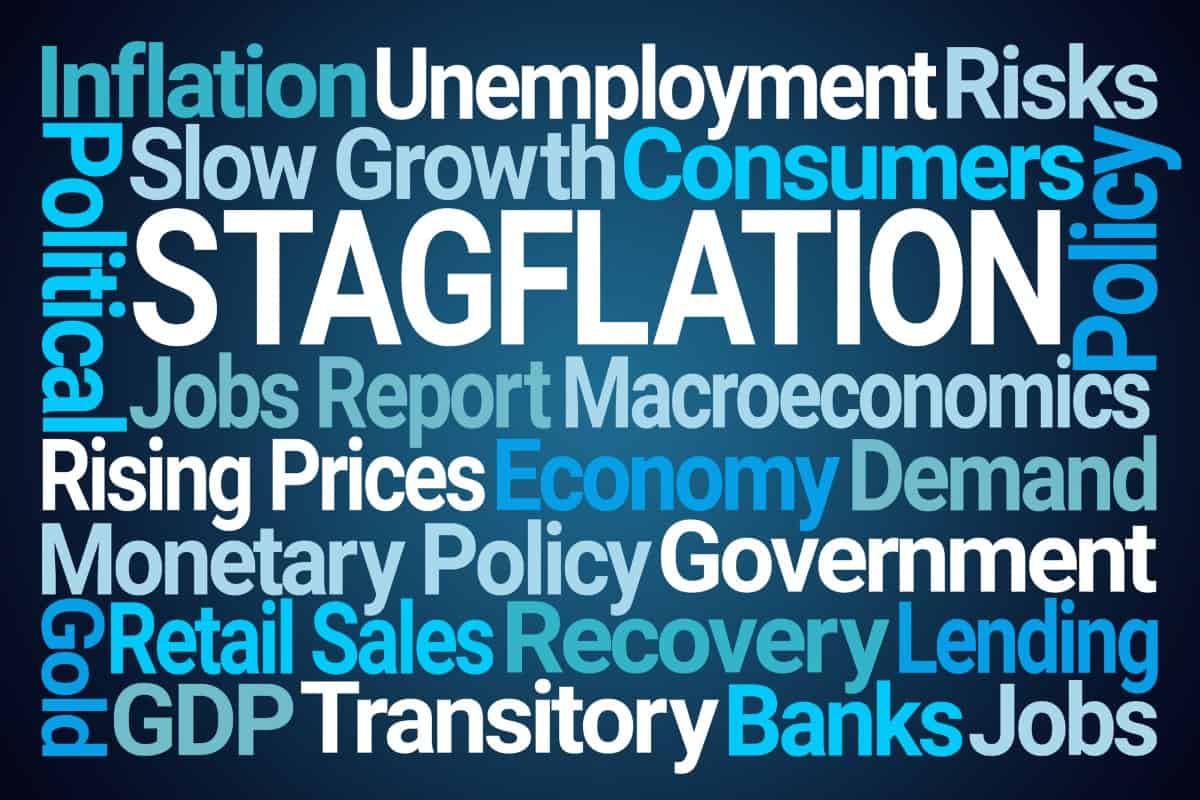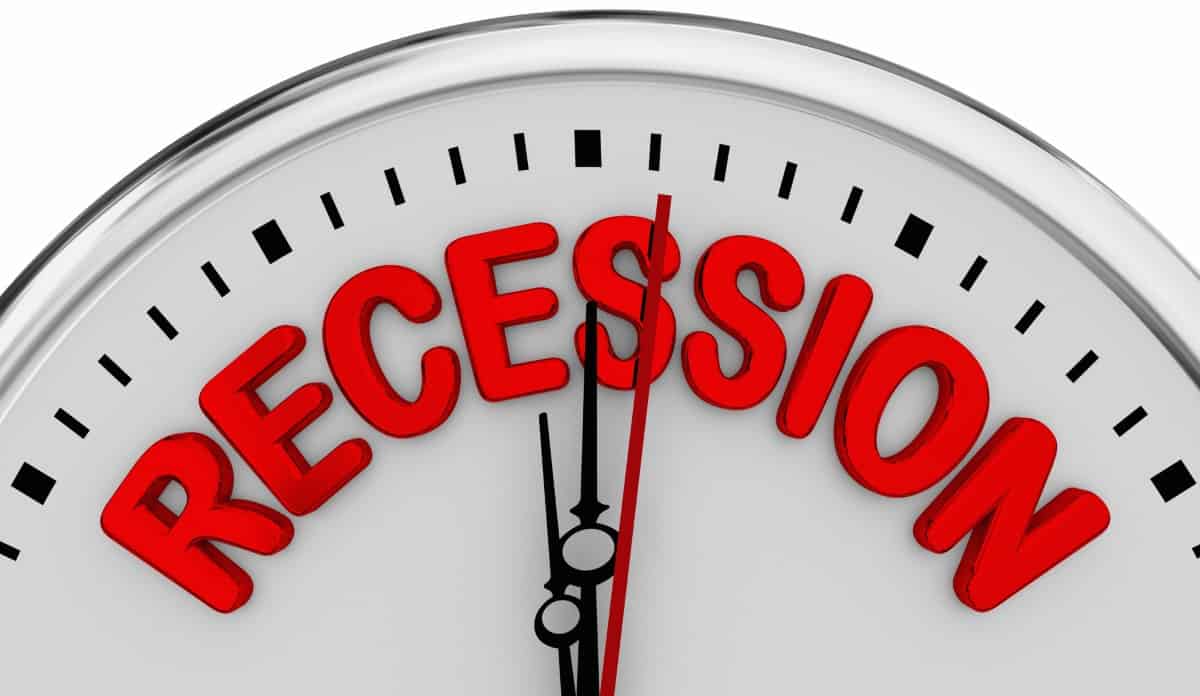JPMorgan Warns the US Could Be Headed for 1970s Style Stagflation Eroding Living Standards

JPMorgan has cautioned that the present economic landscape might evolve into a scenario reminiscent of the 1970s, featuring stagflation characterized by elevated inflation and sluggish growth. JPMorgan draws parallels between current geopolitical tensions and those of the 1970s, suggesting a potential inflationary impact.
JPMorgan Seeing Stagflation Risk

JPMorgan CEO Jamie Dimon, cautioned that tight labor markets, significant national debt, and the “largest peacetime fiscal deficits ever” are heightening the chances of prolonged high inflation and interest rates. Speaking to Fox Business Network, he drew parallels between the economic conditions of the 1970s and those of 2024.
Marko Kolanovic, the chief market strategist at JPMorgan, expressed concerns about the impact of the recent rise in consumer and producer prices on the previously optimistic economic outlook that fueled growth in the stock markets. According to him, the recent data is expected to erode investors’ confidence in a “Goldilocks” scenario, where the economy neither grows excessively nor contracts significantly. Instead, there are renewed worries about entering a phase reminiscent of the stagflation observed in the 1970s.
What is Stagflation

Stagflation is an economic condition characterized by a simultaneous occurrence of stagnant economic growth, high unemployment, and high inflation. This combination is considered unusual because inflation and unemployment typically have an inverse relationship, known as the Phillips curve. Stagflation poses challenges for policymakers as traditional tools used to combat inflation (such as raising interest rates) may exacerbate unemployment, and measures to stimulate economic growth (such as reducing interest rates) may worsen inflation. Tackling stagflation is challenging due to several reasons.
#1 Reduced Purchasing Power

High inflation erodes the purchasing power of money, diminishing the real value of wages and savings. This can lead to a decline in the standard of living for individuals and households.
#2 Uncertainty for Businesses

Businesses may face challenges in planning and decision-making due to the uncertainty created by stagflation. The combination of slow economic growth and rising costs can be particularly challenging for companies.
#3 Increased Unemployment

Sluggish business growth will lead to increased unemployment. Americans will not only have to suffer high inflation but also many will loose their jobs.
#4 Interest Rate Pressures

Central banks may face difficulties in setting interest rates to address both inflation and unemployment. Higher interest rates to combat inflation could lead to increased borrowing costs for businesses and consumers, potentially exacerbating economic stagnation. Stagflation presents a policy dilemma for central banks and governments. Standard economic policy tools may be less effective, as actions that address inflation could worsen unemployment, and vice versa.
#5 Worsens Inequality

Stagflation can result in uneven effects on different segments of the population. While some may experience job losses and reduced incomes, others, particularly those holding assets like real estate or commodities, may see their wealth increase.
Related Article: 20 Ways To Invest In Real Estate With Little Or No Money
#6 Social and Political Consequences

Stagflation can contribute to social and political unrest. High unemployment rates and inflationary pressures can lead to dissatisfaction among the public, potentially influencing political dynamics.
Increased Consumer Price Index (CPI) and Producer Price Index (PPI) Raise Concerns

Stagflation is considered bad because it creates a challenging economic environment with conflicting issues that are difficult to address using traditional economic policy tools. It can result in reduced living standards, economic uncertainty, and social and political challenges.
Kolanovic said, “We already had one wave of inflation, and questions started to appear whether a second wave can be avoided if policies and geopolitical developments stay on this course.”
Expectations for Fed rate cuts this year have diminished in the markets due to quicker-than-anticipated inflation and resistance from policymakers. In the previous month, Federal Reserve officials maintained interest rates, expressing caution about the potential risks associated with implementing policy adjustments too early.
Like Financial Freedom Countdown content? Be sure to follow us!
Japan and UK Just Fell Into a Recession. Is the US Next?

Two of the largest global economies have officially entered a recession as per the data released last week. Japan experienced an unexpected decline in GDP, attributed to its weakened currency and aging population. Simultaneously, the UK witnessed a contraction in growth for the second consecutive quarter, occurring just months before a crucial election. Economic data released in the U.S. showed rising unemployment. Although the Federal Reserve could cut rates, inflation came in higher than expected effectively causing concern among economist.
Japan and UK Just Fell Into a Recession. Is the US Next?
Discover the Top 10 U.S. Cities Where Renters’ Income Goes the Furthest

With housing affordability at an all-time low, many Americans are forced to rent. While certain cities offer a higher income potential, they also have higher living cost. For renters, the optimal solution often lies in finding a middle ground — achieving the perfect balance between income and expenses. Luckily, individuals in search of apartments can now make informed decisions by exploring the latest report on RentCafe.com, which identifies cities where they can maximize the value of their budget. Here are the top 10 cities where renters can stretch their dollars.
Discover the Top 10 U.S. Cities Where Renters’ Income Goes the Furthest
Comparing Retirement Ages: How Does the US Stack Up Against Other Countries?

Retirement age fluctuates across nations, influenced by diverse factors such as labor market dynamics, job types, economic policies, gender roles, and pension systems. For instance, Saudi Arabia stands out as the sole country offering full retirement benefits to individuals under 50, whereas in 2023, France faced uproar after raising its retirement age by two years, sparking widespread strikes. The Organization for Economic Co-operation and Development (OECD) collects and analyzes retirement data using distinct metrics: – The Current Retirement Age signifies the age at which individuals can retire with full pension benefits after a career starting at age 22, without facing any deductions. – The Effective Retirement Age represents the average age at which workers aged 40 or older exit the workforce, influenced by personal decisions or job availability.
Comparing Retirement Ages: How Does the US Stack Up Against Other Countries?
The 9 States Taxing Social Security in 2024 and the 2 That Just Stopped

As 2023 tax filing season draws to a close, retirees across the nation are adjusting their financial plans for 2024, but a crucial detail could drastically alter the landscape of retirement living: the taxing of Social Security benefits. While many bask in the belief that their golden years will be tax-friendly, residents in nine specific states are facing a reality check as their Social Security benefits come under the taxman’s purview. Conversely, a wave of relief is set to wash over two states, marking an end to their era of taxing these benefits. This shift paints a complex portrait of retirement planning across the U.S., underscoring the importance of staying informed of the ever changing tax laws. Are you residing in one of these states? It’s time to uncover the impact of these tax changes on your retirement strategy and possibly reconsider your locale choice for those serene post-work years. Here are the 9 states taxing social security benefits.
The 9 States Taxing Social Security in 2024 and the 2 That Just Stopped
National Debt Exceeds Previous Projections, Signaling Troubling Times Ahead for the U.S. Economy as per CBO March report

The Congressional Budget Office (CBO) performs nonpartisan analysis for the U.S. Congress. The latest Budget and Economic Outlook released March 2024, offered dire projections for the country’s fiscal and economic landscape over the upcoming decades. Unfortunately the national debt is higher than initially anticipated and is projected to hit $141 trillion by 2054.
Retire Abroad and Still Collect Social Security? Avoid These 9 Countries Where It’s Not Possible

Dreaming of retiring to a sun-drenched beach or a quaint village? Many Americans envision spending their golden years abroad, savoring the delights of new cultures and landscapes. However, an essential part of this dream hinges on the financial stability provided by Social Security benefits. Before packing your bags and bidding farewell, it’s crucial to know that not all countries play by the same rules when it comes to collecting these benefits overseas. Here are the nine countries where your dream of retiring abroad could hit a snag, as Social Security benefits don’t cross every border. Avoid living in these countries so your retirement plans don’t get lost in translation.
Retire Abroad and Still Collect Social Security? Avoid These 9 Countries Where It’s Not Possible

John Dealbreuin came from a third world country to the US with only $1,000 not knowing anyone; guided by an immigrant dream. In 12 years, he achieved his retirement number.
He started Financial Freedom Countdown to help everyone think differently about their financial challenges and live their best lives. John resides in the San Francisco Bay Area enjoying nature trails and weight training.
Here are his recommended tools
M1 Finance: John compared M1 Finance against Vanguard, Schwab, Fidelity, Wealthfront and Betterment to find the perfect investment platform. He uses it due to zero fees, very low minimums, automated investment with automatic rebalancing. The pre-built asset allocations and fractional shares helps one get started right away.
Personal Capital: This is a free tool John uses to track his net worth on a regular basis and as a retirement planner. It also alerts him wrt hidden fees and has a budget tracker included.
Streitwise is available for accredited and non-accredited investors. They have one of the lowest fees and high “skin in the game,” with over $5M of capital invested by founders in the deals. It is also open to foreign/non-USA investor. Minimum investment is $5,000.
Platforms like Yieldstreet provide investment options in art, legal, structured notes, venture capital, etc. They also have fixed-income portfolios spread across multiple asset classes with a single investment with low minimums of $10,000.







